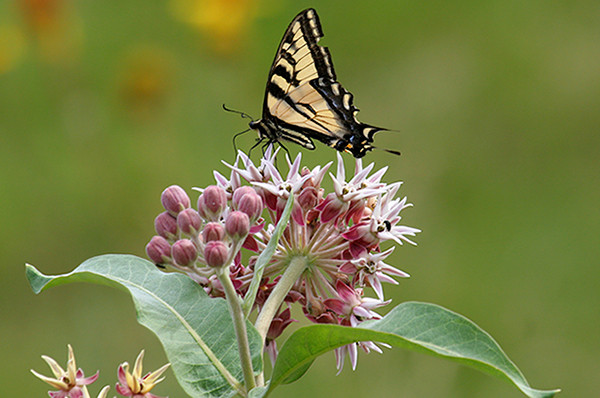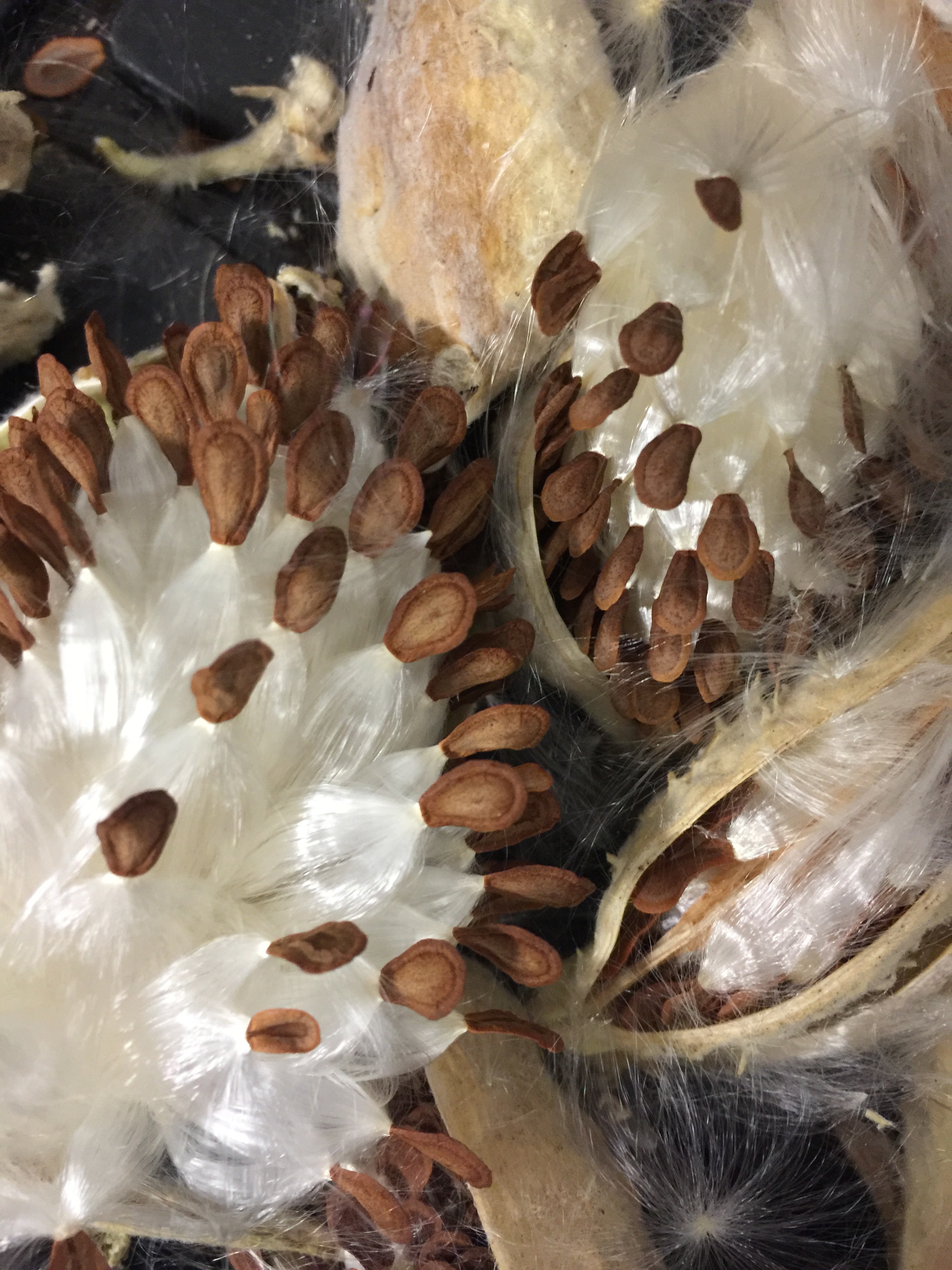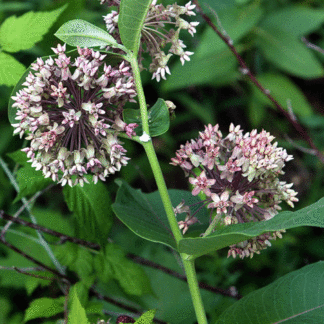
Make it part of your permanent landscape this season. Hardy from one end of the country to another, easy to grow, and ready to self-sow if you want more plants, Showy Milkweed is a treasure. Either way, once the seeds have gone through their chill time, you can sow and grow them indoors until they have at least 2 sets of true leaves. Put the bag in the fridge where it won't be disturbed for a month. But that takes up space, so another method is to place the seeds onto a moistened paper towel, fold the towel over them, and place it in a plastic bag. If you have room in your fridge, pop the seeds into the Bio Dome and put the whole Dome (or just the bottom tray, covered with plastic) into the fridge. When your seeds arrive, they need about a month of chill time. Here are just a few of the butterflies you can look for on your Showy Milkweed:

It's an amazing sight, and one that every gardener should experience. And if you look very closely under the stems, you may see semi-transparent chrysalises containing beautiful folded-up butterflies, just waiting to break open and fly. That means that the caterpillars have fed and are ready for the chrysalis stage. Or let the handsome seedpods form, cut them off, and share the rewards with friends who lack Showy Milkweed in their gardens.īecause milkweed is a food source for monarch caterpillars, you may find some nibbled foliage. speciosa) is native from west of the Mississippi into California and north to Canada. It will self-sow, so if you don't want volunteers, simply remove the last blooms before they set seed. If you decide to grow milkweed in your yard, be aware that the cardiac glycosides contained in the plants are toxic to pets and people also. Some asclepias species (not the cultivated varieties, but the wild species) can be invasive, but Showy Milkweed is far more restrained. This is not a container plant it grows a long taproot, so try to plant it where you know you want it to grow, because transplanting is very difficult. Be sure to site Showy Milkweed in a fully sunny spot, in well-drained soil. Honeybees and bumblebees find the nectar irresistible too. And the blooms have that distinctive licorice aroma so beloved of hummingbird mint.īutterflies aren't the only pollinators to visit these blooms. You will seldom find it out of bloom for 4 to 5 months at a stretch.

The blue-green leaves are thick and slightly hairy, topped by glorious rosy-pink starbursts fully 4 to 5 inches wide from late spring into early fall.

Showy Milkweed is a stout, well-branched plant, airy and beautifully textured. A pollinator magnet you simply must grow in your sunny garden, it is a Native American perennial with so many merits, you will wonder how you ever got by without it. Specific epithet means showy.We are honored to make Showy Milkwood seeds available this season. Genus name honors the Greek god Asklepios the god of medicine. Flowers are a nectar source for many butterflies and leaves are a food source for monarch butterfly larvae (caterpillars). Seed pods are valued in dried flower arrangements. Flowers give way to prominent, rough seed pods (2-3" long) which split open when ripe releasing their numerous silky-tailed seeds for dispersal by the wind. Stems and leaves exude a milky sap when cut or bruised. Globular clusters (umbels to 3" across) of fragrant, pinkish-white to pinkish-purple, star-like flowers appear mostly in the upper leaf axils over a long bloom period from late spring well into summer.

It typically grows 2-4' tall on stout, upright stems with velvety, broad-oblong to broad-ovate, gray-green leaves (to 8" long) with conspicuous veining. Asclepias speciosa, commonly called showy milkweed, is a rough, weedy perennial which commonly occurs on dry slopes, open woodland areas, roadsides, waste areas and along streams in western North America.


 0 kommentar(er)
0 kommentar(er)
